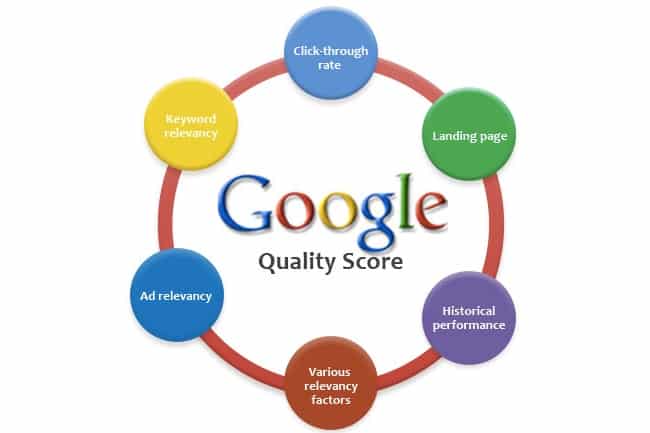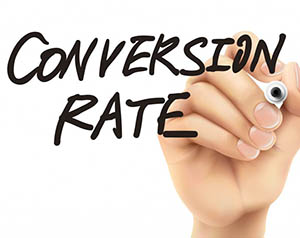How to Improve Quality Score in Google AdWords
What is Quality Score
Quality score is a Google rating, from 1 to 10, on the quality and relevance of the keywords you have chosen with your ads.
Based on this data, each keyword receives a Quality score on a scale of 1 to 10, with 1 being the lowest value and 10 being the highest.
Zero Quality Scores, which you will see with this “-” symbol, appear when the Quality Score for a keyword cannot be accurately determined because there are not enough impressions or clicks.
Google calculates the Quality score based on the experience a user will have with an ad and a landing page for a particular keyword.
A higher Quality Score can lead to lower cost-per-clicks and a better ad position.

What does Quality Score depend on?
- From the click-through rate (CTR).
- From the relevance of keywords to ad groups.
- From the quality and relevance of the Landing page.
- From the relevance of ad texts.
- From different performance depending on the devices.
- From the geographic performance of your ads.
- From the history of your AdWords account performance.
Although no one other than Google knows exactly how much weight is given to each of them, we can say that click-through rate (CTR) is one of the most important.
When more and more people see and click on your ad, this is a strong indication to Google that your ads are relevant and useful to them.
Therefore, Google rewards you with higher positions in search results and lower costs.
Factors that determine the Quality Score
Quality score is determined by three main factors: Expected clickthrough rate (CTR), Ad relevance and Landing page experience.
In more detail:
1. Expected clickthrough rate (CTR)
Expected clickthrough rate (CTR) is a keyword status used by AdWords, which measures the likelihood that your ads will receive clicks when they appear for that keyword, regardless of ad position, extensions and other ad formats affect the visibility and visibility of your ads.
This status determines if that keyword is likely to result in a click on your ads.
AdWords monitors how your keywords have performed in the past, based on the position of your ads.
The expected clickthrough rate (CTR) that AdWords provides for each keyword in your account is a guess based on the assumption that each search term that matches exactly your keywords.
At the time of AdWords auction, AdWords calculates more accurately the expected clickthrough rate (CTR) based on search terms, device type and other factors.
There are three possible statuses: above average, average, or below average:
- Status average or above average means that there are no significant issues with the Expected clickthrough rate of this keyword, compared to all other keywords in AdWords.
- Status below average means that you may need to change the text of your ads to make them more relevant to your keywords. Use these statuses to determine and understand whether the keywords you have chosen are relevant your ads, and if they will help you to make your ads perform well.
2. Ad relevance
Ad relevance is a keyword status used by Google Ads, which measures how closely your keyword relates to your ads.
This status describes how your keyword matches your ad message.
There are three possible statuses: above average, average, or below average:
- Status average or above average means that there are no significant problems with your keyword relevance compared to all other keywords in AdWords.
- Status below average means that your ads or keywords you’ve chosen may not be very relevant, or your ads may include many topics.
Try to create ad groups with a specific theme so that you can ensure that your ads are closely related to the keywords you have chosen.
Use this status to identify keywords that may not be relevant to your ads, and may result in them not performing well enough.
3. Landing page experience
The Landing page experience is a keyword status used by AdWords to evaluate how relevant and useful your Landing page will be to users who click on your ad.
Top rated Landing pages are usually well organized and feature text related to users’ search terms.
Landing page experience status describes the chances that your Landing page will provide a good experience for users who will click on your ad and be redirected to your website.
You need to make sure that your landing pages are clear and useful to the users, as well as relevant to your keywords and, essentially, what the users are looking for.
There are three possible statuses: above average, average, or below average:
- Status average or above average means that there are no significant problems with the relevance of your keywords and landing pages compared to all other keywords in AdWords.
- The status below average means that you may need to make some changes to your landing page in order to improve them.
Use this status to identify Landing pages that may adversely affect the performance of your ads and, consequently, your conversions.
How to Improve the Quality Score
If the Expected clickthrough rate (CTR) of your ads needs improvement, you should do the following:
- Create more attractive ad texts to capture users’ clicks.
- Point out a unique advantage of your products or services.
- Experiment with different calls to action.
- Be more specific with your ad texts.
If your Ad relevance needs improvement, you should do the following:
- Try to use the language that users use in their search queries as ad text.
- Move your keywords to smaller ad groups and create more targeted ads.
- Look for ad groups with different keywords that don’t match the same ad, and move them to their own ad groups with more targeted ads to target users’ search queries.
- Try to find and address the search intent of the users behind their search queries.
- Add negative keywords to prevent your ads from appearing in search queries that are not relevant to your ads.
If your ad’s Landing page experience needs improvement, you should do the following:
- Send users to a Landing page that are more relevant to users’ search queries. If someone is looking for leather shoes, then the page to which you are sending them through your ad should contain leather shoes rather than just shoes.
- Use your ads to improve your Landing page. Your ads should tell users what they are about to encounter if they click on the ad and find what they are looking for on your Landing page.
- Make sure people find on your Landing page what they clicked on in your ads. Even if that is the case, experiment with your Landing page and try to get the most engagement from users.
- Use Conversion rate as a measure of your Landing Page performance. Although the conversion rate is not something that affects the Quality score, it is a good metric for the performance of your Landing page.
- Mobile First. The ease of navigating through mobile devices is something that users value and prefer. So think mobile.

